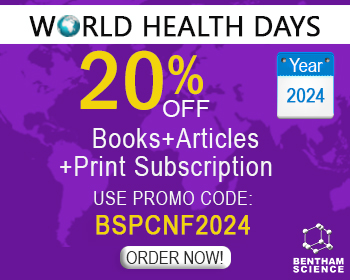Abstract
The function of many endogenous molecules in all eukaryotic cells depends on their subcellular localisation, being active when localized in one cellular compartment and inactive in another. Translocation or re-localization of mislocalized components in the optimal subcellular site may contribute to the development of novel cancer therapies and to the re-evaluation of conventional treatment. For instance, various agents are able to entrap cytoplasmic anti-apoptotic pathways to the nucleus, thus activating apoptosis. Moreover, amongst the factors identified so far, the optimal location of the tumor suppressor p53 for promoting cell arrest and apoptosis seems to be the nucleus, while the nuclear factor kappa B (NFκB) is desirable to stay in the cytoplasm. Thus, the mechanisms of nuclear translocation of endogenous signaling components, like p53, NFκB and various heat shock proteins (HSPs), may serve as targets for pharmacological intervention, without excluding the possible role of uptake and active transport into the nucleus of extracellular proteins.
Keywords: Anticancer agents, cell cycle, nuclear translocation, stress response, yeast
Current Medicinal Chemistry
Title: Nuclear Translocation During the Cross-Talk Between Cellular Stress, Cell Cycle and Anticancer Agents
Volume: 13 Issue: 11
Author(s): E. Tiligada
Affiliation:
Keywords: Anticancer agents, cell cycle, nuclear translocation, stress response, yeast
Abstract: The function of many endogenous molecules in all eukaryotic cells depends on their subcellular localisation, being active when localized in one cellular compartment and inactive in another. Translocation or re-localization of mislocalized components in the optimal subcellular site may contribute to the development of novel cancer therapies and to the re-evaluation of conventional treatment. For instance, various agents are able to entrap cytoplasmic anti-apoptotic pathways to the nucleus, thus activating apoptosis. Moreover, amongst the factors identified so far, the optimal location of the tumor suppressor p53 for promoting cell arrest and apoptosis seems to be the nucleus, while the nuclear factor kappa B (NFκB) is desirable to stay in the cytoplasm. Thus, the mechanisms of nuclear translocation of endogenous signaling components, like p53, NFκB and various heat shock proteins (HSPs), may serve as targets for pharmacological intervention, without excluding the possible role of uptake and active transport into the nucleus of extracellular proteins.
Export Options
About this article
Cite this article as:
Tiligada E., Nuclear Translocation During the Cross-Talk Between Cellular Stress, Cell Cycle and Anticancer Agents, Current Medicinal Chemistry 2006; 13 (11) . https://dx.doi.org/10.2174/092986706776872952
| DOI https://dx.doi.org/10.2174/092986706776872952 |
Print ISSN 0929-8673 |
| Publisher Name Bentham Science Publisher |
Online ISSN 1875-533X |
Call for Papers in Thematic Issues
Advances in Medicinal Chemistry: From Cancer to Chronic Diseases.
The broad spectrum of the issue will provide a comprehensive overview of emerging trends, novel therapeutic interventions, and translational insights that impact modern medicine. The primary focus will be diseases of global concern, including cancer, chronic pain, metabolic disorders, and autoimmune conditions, providing a broad overview of the advancements in ...read more
Cellular and Molecular Mechanisms of Non-Infectious Inflammatory Diseases: Focus on Clinical Implications
The Special Issue covers the results of the studies on cellular and molecular mechanisms of non-infectious inflammatory diseases, in particular, autoimmune rheumatic diseases, atherosclerotic cardiovascular disease and other age-related disorders such as type II diabetes, cancer, neurodegenerative disorders, etc. Review and research articles as well as methodology papers that summarize ...read more
Chalcogen-modified nucleic acid analogues
Chalcogen-modified nucleosides, nucleotides and oligonucleotides have been of great interest to scientific research for many years. The replacement of oxygen in the nucleobase, sugar or phosphate backbone by chalcogen atoms (sulfur, selenium, tellurium) gives these biomolecules unique properties resulting from their altered physical and chemical properties. The continuing interest in ...read more
Current advances in inherited cardiomyopathy
Describe in detail all novel advances in multimodality imaging related to inherited cardiomyopathy diagnosis and prognosis. Shed light to deeper phenotypic characterization. Acknowledge recent advances in genetics, genomics and precision medicineread more
 3
3
- Author Guidelines
- Graphical Abstracts
- Fabricating and Stating False Information
- Research Misconduct
- Post Publication Discussions and Corrections
- Publishing Ethics and Rectitude
- Increase Visibility of Your Article
- Archiving Policies
- Peer Review Workflow
- Order Your Article Before Print
- Promote Your Article
- Manuscript Transfer Facility
- Editorial Policies
- Allegations from Whistleblowers
- Announcements
Related Articles
-
High-density Lipoprotein, Vascular Risk, Cancer and Infection: A Case of Quantity and Quality?
Current Medicinal Chemistry Transporters at CNS Barrier Sites: Obstacles or Opportunities for Drug Delivery?
Current Pharmaceutical Design Developments in Selective Small Molecule ATP-Targeting the Serine/Threonine Kinase Akt/PKB
Mini-Reviews in Medicinal Chemistry Pleuroparenchymal Fibroelastosis: Its Clinical Characteristics
Current Respiratory Medicine Reviews Quantitative Structure-activity Relationships of Imidazole-containing Farnesyltransferase Inhibitors Using Different Chemometric Methods
Medicinal Chemistry Bis (Isothiocyanatomethyl) Benzene, A Plant Derived Anti-Neoplastic Compound: Purified from Moringa Oleifera Leaf Extract
Anti-Cancer Agents in Medicinal Chemistry Differentiation-Inducing Therapy for Solid Tumors
Current Pharmaceutical Design Photoinduced Controlled-Release Drug Delivery Systems for Applications in Nanomedicine
Current Organic Chemistry Microwave Synthesis of Guanine and Purine Analogs
Current Microwave Chemistry Morpholine Based Diazenyl Chalcones: Synthesis, Antimicrobial Screening and Cytotoxicity Study
Anti-Cancer Agents in Medicinal Chemistry Salmonella as Live Trojan Horse for Vaccine Development and Cancer Gene Therapy
Current Gene Therapy Low Testosterone Levels and Metabolic Syndrome in Aging Male
Current Pharmaceutical Design Review of Evidence-Based Psychotherapies for Pediatric Mood and Anxiety Disorders
Current Psychiatry Reviews High Throughput Genetic Screening for the Detection of Hereditary Nonpolyposis Colon Cancer (HNPCC) Using Capillary Electrophoresis
Combinatorial Chemistry & High Throughput Screening LPTS: A Novel Tumor Suppressor Gene and a Promising Drug Target for Cancer Intervention
Recent Patents on Anti-Cancer Drug Discovery Integrative Analysis of miRNA-mediated Competing Endogenous RNA Network Reveals the lncRNAs-mRNAs Interaction in Glioblastoma Stem Cell Differentiation
Current Bioinformatics Possible Binding Mode Analysis of Pyrazolo-triazole Hybrids as Potential Anticancer Agents through Validated Molecular Docking and 3D-QSAR Modeling Approaches
Letters in Drug Design & Discovery Relationship Between Non-Genomic Actions of Estrogens and Insulin Resistace
Infectious Disorders - Drug Targets Synthesis and Preliminary Biological Evaluation of Polyamine-aniline Acridines as P-glycoprotein Inhibitors
Medicinal Chemistry Bio-Functional Inorganic Materials: An Attractive Branch of Gene-Based Nano-Medicine Delivery for 21st Century
Current Gene Therapy























